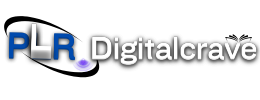
Maximizing Profit Margins: Strategies for Pricing and Packaging Digital Products
In today’s digital economy, businesses are constantly seeking ways to maximize profit margins. One of the key areas where this can be achieved is through effective pricing and packaging strategies for digital products. Whether you’re selling software, e-books, online courses, or any other digital offering, the way you price and present your products can have a significant impact on your bottom line. In this comprehensive guide, we will explore various strategies and best practices to help you optimize your profit margins.
1. Understanding Pricing Strategies
Setting the right price for your digital product is crucial for attracting customers while also maximizing revenue. There are several pricing strategies you can consider:
- Value-Based Pricing: This strategy involves pricing your product based on the value it delivers to customers. Conduct market research and customer surveys to understand how much value your product provides compared to alternatives.
- Competitive Pricing: Analyze competitors’ pricing for similar digital products. You can choose to price your product lower, at par, or higher based on factors such as product features, brand reputation, and target market positioning.
- Penetration Pricing: This strategy involves setting a low initial price to penetrate the market quickly. As your product gains traction and market share, you can gradually increase the price.
- Premium Pricing: Position your product as a high-quality offering and price it at a premium compared to competitors. Emphasize unique features, exceptional customer support, or exclusive content to justify the higher price.
2. Packaging Strategies
Packaging refers to how you bundle and present your digital products to customers. The right packaging strategy can influence purchasing decisions and increase overall sales. Consider the following packaging strategies:
- Tiered Pricing: Offer different product tiers/packages at varying price points to cater to different customer segments. For example, a basic, standard, and premium package with increasing features and benefits.
- Bundle Deals: Create bundles by combining multiple digital products or services at a discounted price. This encourages customers to buy more items at once, increasing the average order value.
- Subscription Model: Offer your digital product as a subscription service with monthly or annual billing. This provides a steady stream of revenue and encourages customer retention.
- Free Trials and Freemium Models: Provide free trials or a limited version of your product (freemium) to attract customers. Once they experience the value, they are more likely to upgrade to a paid version.
3. Pricing Optimization Techniques
Optimizing your pricing strategy involves continuous testing, analysis, and refinement. Leverage the following techniques to fine-tune your pricing for maximum profitability:
- A/B Testing: Conduct A/B tests with different pricing structures, such as variations in pricing tiers, discounts, or payment options. Analyze customer behavior and conversion rates to identify the most effective pricing model.
- Dynamic Pricing: Utilize dynamic pricing algorithms to adjust prices based on factors like demand, time of purchase, or customer segmentation. This ensures optimal pricing elasticity and revenue generation.
- Price Anchoring: Present a higher-priced option first to anchor customers’ perception of value. Subsequent options appear more reasonable in comparison, leading to higher conversions for mid-tier or premium packages.
4. Recommended Tools and Resources
To implement these pricing and packaging strategies effectively, consider using the following tools and resources:
Pricing Analytics Tools: Tools like Google Analytics, Kissmetrics, or Hotjar help track customer behavior, conversion rates, and revenue metrics. Use data insights to make informed pricing decisions.
Payment Gateways: Choose reliable payment gateways such as PayPal, Stripe, or Square to facilitate smooth and secure transactions for your digital products.
E-commerce Platforms: Platforms like Shopify, WooCommerce, or BigCommerce offer robust features for selling digital products, managing inventory, and optimizing pricing strategies.
5. Recommended Reading
For further insights into pricing strategies and maximizing profit margins, consider these recommended books:
- “Predictably Irrational” by Dan Ariely: Explores the psychology of pricing and consumer behavior.
- The Strategy and Tactics of Pricing” by Thomas T. Nagle and John E. Hogan: Provides comprehensive strategies for pricing products and services effectively.
- Hooked: How to Build Habit-Forming Products” by Nir Eyal: Focuses on creating digital products that engage customers and drive recurring sales.
Conclusion
Maximizing profit margins for your digital products requires a strategic approach to pricing and packaging. By understanding your market, leveraging pricing strategies, optimizing packaging, and using the right tools, you can enhance revenue streams, improve customer satisfaction, and build a sustainable business in the digital landscape.
